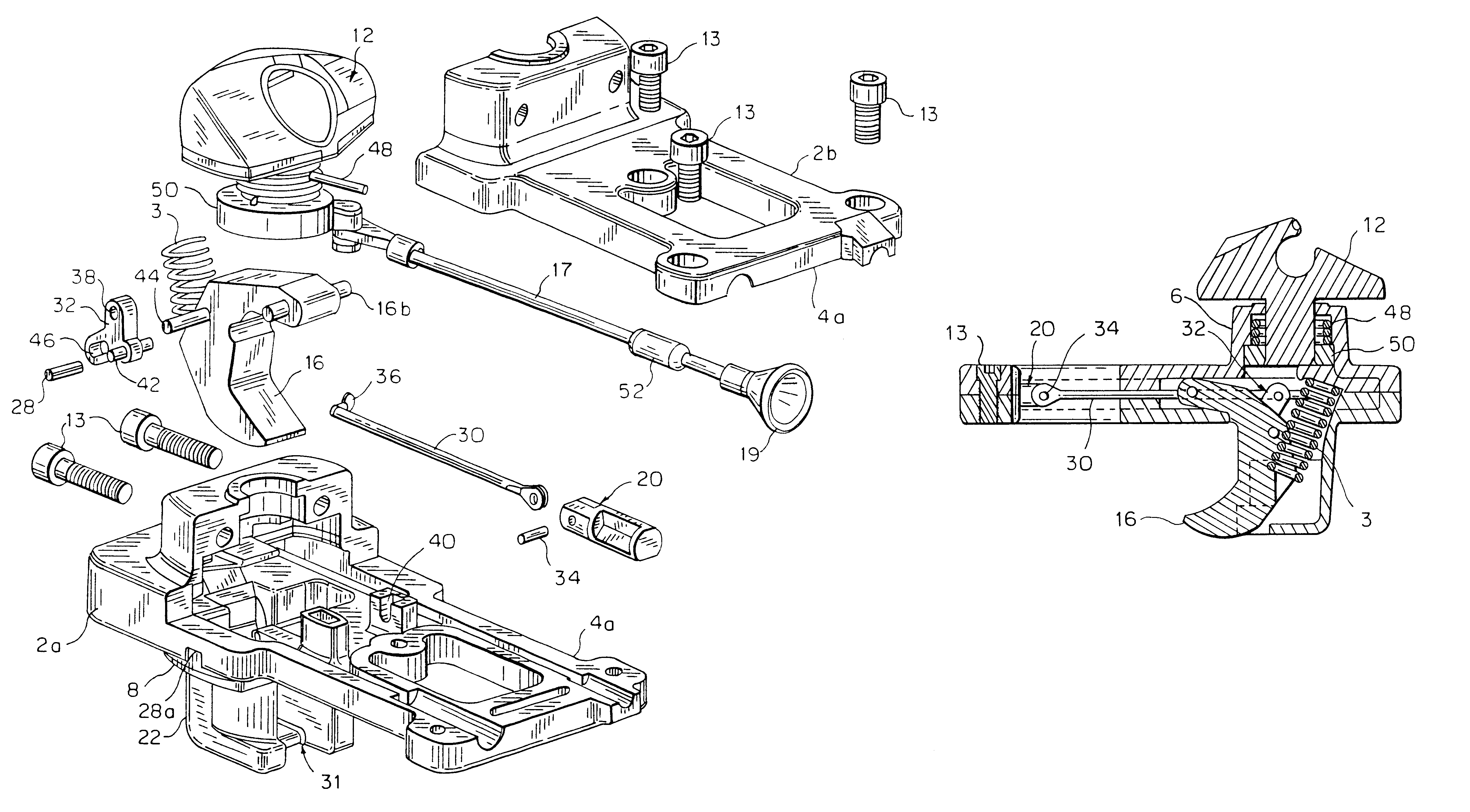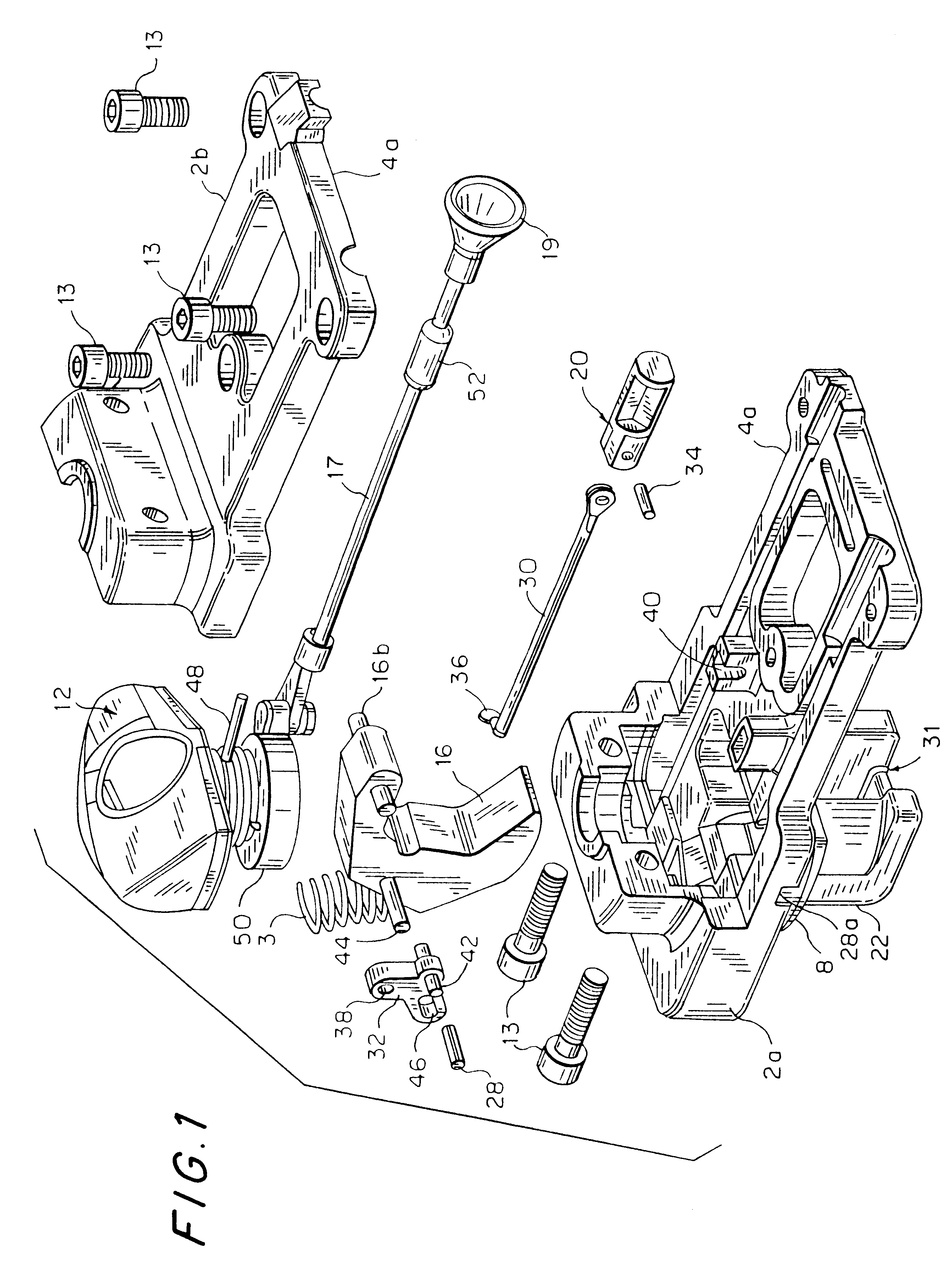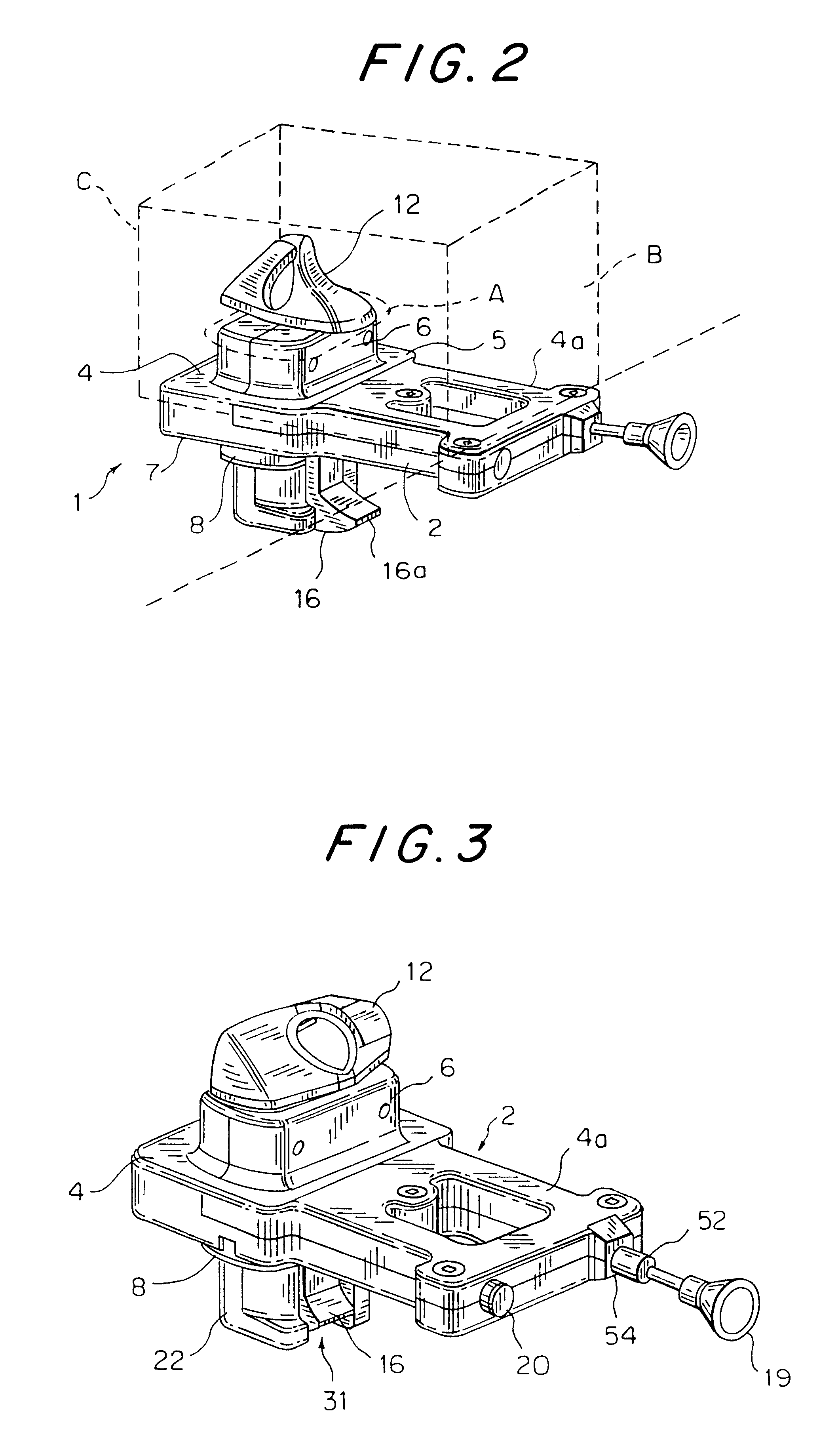Locking device for use with stackable shipping containers
a technology for stackable shipping containers and locking devices, which is applied in the direction of snap fasteners, couplings, manufacturing tools, etc., can solve the problems of not providing a combined spring-biased twist-head and hook lock, and achieve the effect of increasing the flexibility of the operator
- Summary
- Abstract
- Description
- Claims
- Application Information
AI Technical Summary
Benefits of technology
Problems solved by technology
Method used
Image
Examples
Embodiment Construction
As shown in FIG. 2, locking device 1 comprises a housing 2 when housing sections 2a and 2b, shown in FIG. 1, are joined together by bolts 13. Housing 2 is provided with a compression pad 4 on which upper and lower shear blocks 6, 8 are integrally formed. Both upper and lower shear blocks 6, 8 have a longitudinal length 14, best shown in FIG. 6, which corresponds to the longitudinal length of a standard ISO corner casting aperture A of a corner castings B of container C which can be stacked on carriers including rail cars. For purposes of clarity only upper container C with casting B having aperture A are shown in phantom lines on FIG. 2, it being understood that a top casting on a lower container casting B has an identical size aperture engaged around shear block 8 when the top container C is stacked with the lock on the lower container. When locking device 1 is engaged between the corner castings on an upper and lower container in a stack to limit their relative movement, the conta...
PUM
 Login to View More
Login to View More Abstract
Description
Claims
Application Information
 Login to View More
Login to View More - R&D
- Intellectual Property
- Life Sciences
- Materials
- Tech Scout
- Unparalleled Data Quality
- Higher Quality Content
- 60% Fewer Hallucinations
Browse by: Latest US Patents, China's latest patents, Technical Efficacy Thesaurus, Application Domain, Technology Topic, Popular Technical Reports.
© 2025 PatSnap. All rights reserved.Legal|Privacy policy|Modern Slavery Act Transparency Statement|Sitemap|About US| Contact US: help@patsnap.com



